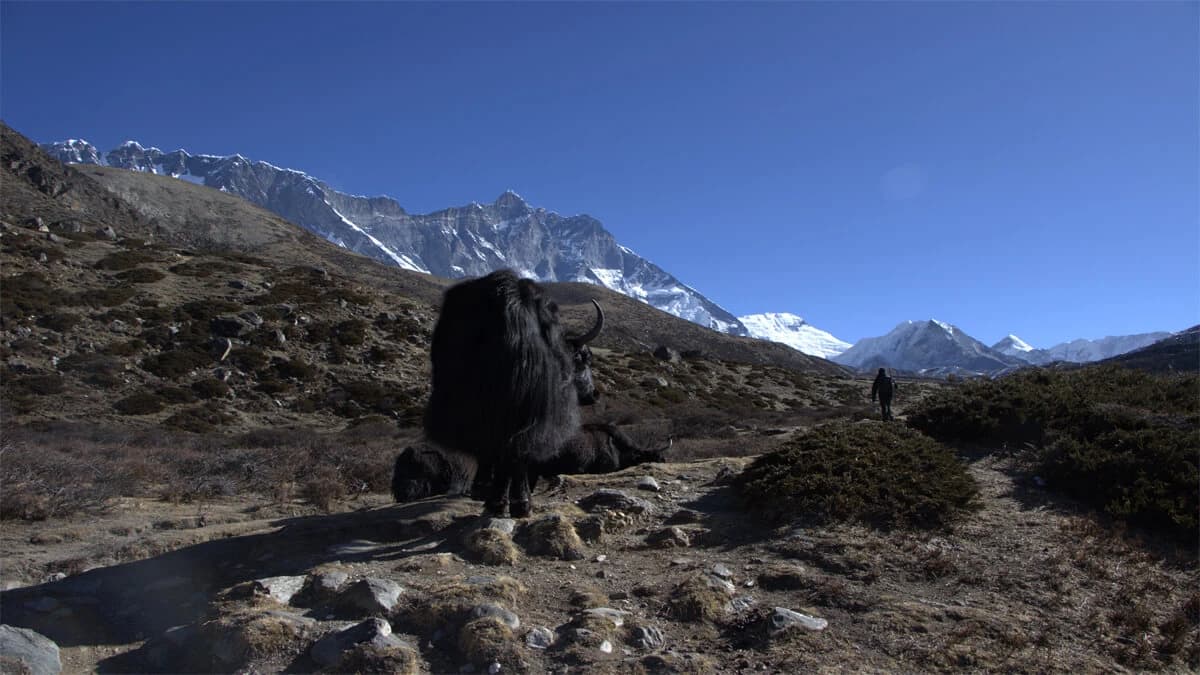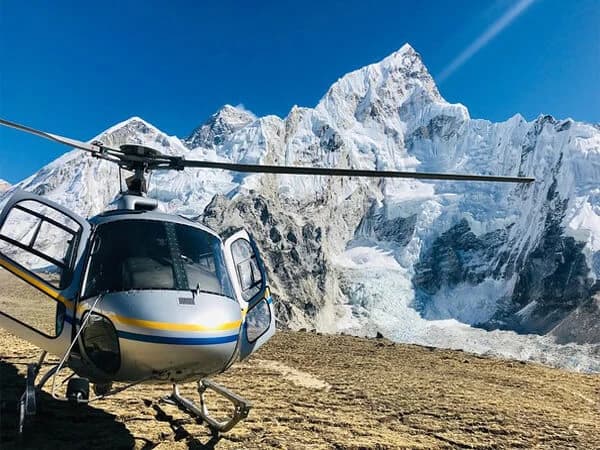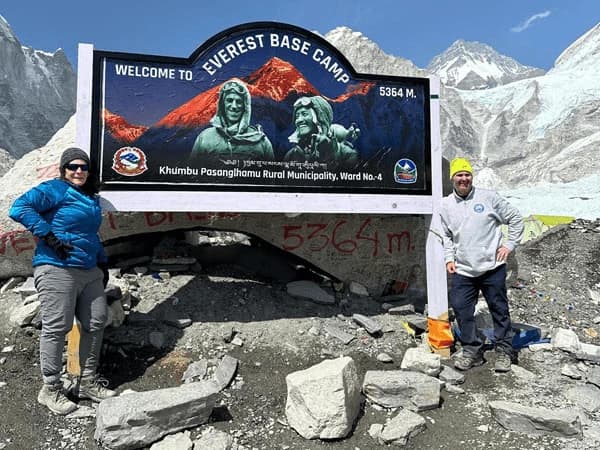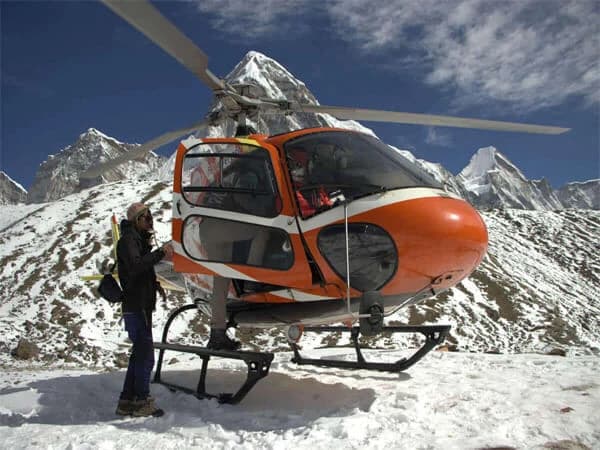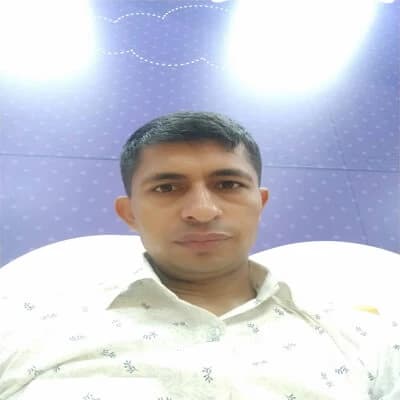The Best time for Everest Base Camp trek are autumn (September to November) and spring (March to May). During this time the skies are typically clear, offering spectacular views of Everest and the surrounding Himalayan giants, while temperatures remain moderate and warm enough for daytime as well as trekking yet cool at this altitude. Autumn follows the monsoon, washing away dust and pollen, and brings stable weather and crisp air. Spring heralds rhododendron blooms and longer daylight hours, making the trails vibrant and inviting. Both seasons have well-established tea houses and reliable trail services, whereas winter’s heavy snow and summer’s monsoon rains can create hazardous or muddy conditions.
The journey begins with the flight from Kathmandu to the hair-raising Lukla airstrip, perched at 2,800m. The small airstrip is one of the world’s most dangerous airports and there have been numerous crashes over the years. But you likely are safer making the journey by air than by mountain roads. Altitude is an important consideration on the Everest Base camp trek and nearby Namche Bazar(3,440m), the Sherpa village and gateway to the Khumbu region, is often used as an early layover for rest and acclimatization.
Nepal Mount Everest Base Camp is most popular trek with 30,000 trekkers per year and 10,000 per month during peak season. An upside to the number of trekkers is a well-worn trail and facilities are as good as anywhere in Nepal.
Nepal has tremendous variations in climates, with the highest mountains in the world and a splendid lush landscape. The lowlands are tropical, the midland hills are temperate, and the high mountains have icy weather. The spring and autumn offer clear, bright views of the mountains.
When planning a trek in Everest Base Camp, there are four main seasons to consider: spring, summer (rainy), autumn, and winter. Here’s a brief intro to each.
Everest base camp trek in Spring season (March/April/May)
Spring is the best time for trekking to Everest Base Camp. During this time the weather is perfect for adventure and panoramic view of Mount Everest. It is the perfect season to trek if you're after warmertemperatures, blossoming flora, and temperate days.
Early spring tends to be a bit chilly, with mild temperatures in the low elevation regions between 800-2,000m, making trekking in Everest Base Camp very pleasant. Spring offers a variety of wild flora blossoming above 3000 m which makes higher-altitude trekking more comfortable and exciting. As winter fades away and spring pushes in, temperatures in regions with elevations over 4,000m have moderate temperatures, making way for sunny, clear, and warm trekking conditions.

Considered one of the best seasons to trek and climb in the Everest Region, spring brings the sun and warmer temperatures as well as fields of blossoming wild flora such as the famous giant rhododendrons, giving the landscape a radiant and vibrant texture. The days are long, daytime temperatures are warm to hot, with only occasional showers, and the trails up to the tree line, are ablaze with colorful rhododendron and flowers. Annual temperatures and humidity peak in May – just before the start of the summer monsoon season – bringing an end to the spring trekking season.
Advantages of trekking in the spring season:
- Spring is a great time to trek Everest base camp to enjoy the beauty and adventure with various outdoor activities possible during this season.
- The weather conditions are tolerable with temperatures in the higher altitudes and low lands ranging between 16-23ºC (61-73ºF).
- The weather is pleasant, with warm trekking conditions in the day and warmer nights.
- Trekking this season involves little or no risk- a good time for trekkers to enjoy their strenuous journey.
- Snow that accumulates during winter melts away by April, clearing paths for high mountain passes over 5000m such as Cho La, Larkya La or Thorung La.
- Clear skies early in spring mean less chance of flight cancellations into mountain districts such as Lukla.
- Fewer trekkers compared to October and November, which means more chances to experience the remote corners of the Everest Region.
Disadvantages of trekking in the Spring Season:
- As it gets closer to summer, trekking can get hot and sweaty at a lower altitude.
- Afternoon clouds are common (with generally clear nights and mornings) which can bring clouds and brief downpours.
- Local teahouses and accommodations might be fully booked and overcrowded due to the busiest time of the trekking season.
- Difficulty in carrying backpacks as you climb higher altitudes because it starts getting cold and treacherous, sometimes windy too.
Everest base camp trek in Summer/Rainy Season (June/July/August)
Trekking to Everest Base Camp during the rainy season may be a little inconvenient. Trekking during this time is not typically recommended in Nepal. With the monsoon comes high temperatures, considerable rain and uncomfortable conditions. Mountainous regions are usually enveloped in clouds, and the lower routes are generally muddy with large numbers of leaches.
There are fewer chances of flights from Kathmandu to Lukla due to poor weather conditions. “Where there is a will, there is a way”. However, you don’t have to completely abandon the trek to Everest Base Camp.
In the absence of a flight to Lukla, you can take an alternative mode of transportation to start your trekking venture. You can travel by bus from Kathmandu to Solu-Salleri using the BP Highway. Then, travel by Jeep up to Tham Danda. From there you can trek to Everest Base Camp as there won’t be any rainfall due to high altitude but the general weather will be cloudy. You can view perfect greenery if the weather is clear.
For the rainy season, there are alternative trekking routes other than Everest Base Camp. Upper Dolpo Trek and Upper Mustang Trek are better alternatives because they are similar to the desert and receive very little rainfall. You can enjoy a largely dry climate throughout the summer months, with clear skies, uninterrupted views, and stunning scenery.
Advantages of trekking in Rainy season:
- Fewer travelers, which means the trekkers can enjoy the trail in solitude.
- Less dust due to monsoon rain.
- The valleys are insanely green and beautiful, which gives a good picture.
- Ideal conditions in the alternative routes, protected from the monsoon.
- Opportunities to experience the culture and stunning high Himalayan scenery.
- The accommodation and food are affordable enough due to the off-season.
Disadvantages of trekking in Rainy season:
- Not a good time for trekking to Everest Base Camp.
- The rainy season leads to wet and humid conditions, with obscured views and muddy trails.
- The trail is infested with leeches.
- There are fewer chances of meeting with other trekkers from around the globe.
- Fewer animal sightings.
Everest base camp trek in Autumn Season (September/October/November)
Autumn is the best trekking season for Everest Base Camp Trek with clear skies and incredibly fine weather. The season starts in mid-September and extends to late November. These months have pleasant daytime temperatures, good visibility, and extended spells of fine weather.

Autumn is the best time for adventuretrekking in Nepal. After the monsoon the dust and pollution are cleared from the atmosphere, making way for crystal clear views and with it, stunning panoramas of Mount Everest. It has long been considered the best time to enjoy the magnificent Himalayan views, which means the trails are at their busiest.
Once the weather has settled, most days feature clear blue skies and a bright sun that lasts throughout the day, unlike in spring when cloud builds up in the afternoon. The days are shorter and evenings begin to cool off quite quickly, especially at higher altitudes, making warm trekking gear and a sleeping bag a must!
Advantages of trekking in Autumn Season:
- The snow-capped mountains are visible and most notably, favorable weather for trekking.
- Days tend to be warmer, but nights are colder heading into winter.
- The weather is stable and sunny, with clear skies and gorgeous views.
- The temperature in the upper hill and lower mountains reach about 15-24ºC (59-75ºF).
- Busiest time for trekking, so you will meet many trekking buddies from all over the world.
- Mesmerizing views of dazzling lakes and green pastures are possible when the weather is more pleasant.
- Suitable weather conditions with less risk of snowfall, landslides, storms, avalanches, or other unpredictable disasters.
Disadvantages of trekking in Autumn Season:
- Occasionally short storms may dump considerable snow at high altitudes.
- The trekking route is usually busy and crowded with local teahouses being packed, which many might not like.
Mount Everest base camp trek in Winter Season (December/ January/ February)
During the winter season, it is quite difficult to trek due to cold. There are few people in the Everest Base Camp region. February is off-season for trekking. Very few hotels are open during this time. For most people, it is too cold to trek to high-altitude regions.
If the cold doesn’t bother you, it is a great time to trek to the most popular place Everest Region, because there are far fewer people around compared to October and November. Also, it is great to trek the lower to mid-altitude trails, where the temperature remains fairly pleasant. Christmas and New Year's treks are always very popular for just this reason.
Winter has its charm, and it can be said that winter is spectacular. Although cold, the trails are quiet and the skies are often crystal clear from dawn to dusk – making it a great month for photographers to capture the magic of the mountains. At this time of year, your trekking journey makes you feel no less than a fantasyland with mountains and valleys fully covered with snow.
Mornings can start foggy, but afternoons are usually clear with the occasional snow in the mountains. With this in mind, high passes such as the Kongma La (5,545m), Cho La (5,335m), and Renjo La (5,420m) in the Everest region are usually closed from late November to March. February and March should be avoided by trekkers as these months see the heaviest snowfall in the mountains – blanketing trails and blocking high passes.
Advantages of trekking in the winter season:
- Fewer people on the trail mean no crowds.
- The incredible landscapes of the mountains and snow-covered landscape.
- Daytime temperatures can range between 9-12ºC, and evenings can drop to sub-zero temperatures.
- The sky is often very clear and blue during the day.
- The monasteries are great to visit in winter and some fresh snow on the hills is great for photography.
Disadvantages of trekking in the winter season:
- The freezing temperature and testing weather conditions may pose difficulties for trekking.
- Accommodations are rare, due to the closure of hotels.
- Many of the high passes are inaccessible due to snow coverage.
- Chances of losing the trail due to snow.
- Limited high-altitude trekking.
- The risk of avalanches, although beautiful to see, maybe terrifying.
- Colder temperatures require more planning and preparation, but the rewards are worthwhile.
My Recommendation on Best Time on EBC Trek
Everest base camp trekking is filled with great adventure and can be exciting throughout the year. However, I would recommend you to trek during the spring or autumn season, as they are the best time to trek. You can pick Everest Base Camp as a favorite trekking destination and pack your bag as a great holiday destination. The trek can give you a change of scenery, and provide adventure, to unplug yourself from your mundane everyday routine.
Conclusion: Best Time for Everest Base Camp Trek
While you might associate the highest mountain in the world, The Everest Base Camp trek's best time is autumn and spring. But you are allowed to trek any time of the year, when nature is flourishing everywhere you go in all different seasons. It may depend on your holiday time.
Pack your bags for the Himalayas. No matter when you plan your trek, the weather will bring the best out of your trek. In general, you can get the best during the best seasons for trekking. So, everyone might not pick the best spring and autumn seasons for trekking. Yet, for adventurous enthusiasts, any time of the year is the best, although autumn and spring are the best time to enjoy the trekking season.

